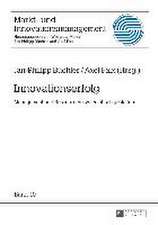Computational Advertising: Techniques for Targeting Relevant Ads: Foundations and Trends in Information Retrieval
Autor Kushal Dave, Vasudeva Varma, Vasudeva Dave Kushal Varmaen Limba Engleză Paperback – 30 oct 2014
Preț: 552.38 lei
Preț vechi: 600.42 lei
-8% Nou
Puncte Express: 829
Preț estimativ în valută:
105.71€ • 109.96$ • 87.27£
105.71€ • 109.96$ • 87.27£
Carte tipărită la comandă
Livrare economică 14-28 aprilie
Preluare comenzi: 021 569.72.76
Specificații
ISBN-13: 9781601988324
ISBN-10: 160198832X
Pagini: 174
Dimensiuni: 156 x 234 x 9 mm
Greutate: 0.25 kg
Editura: Now Publishers
Seria Foundations and Trends in Information Retrieval
Locul publicării:Hanover
ISBN-10: 160198832X
Pagini: 174
Dimensiuni: 156 x 234 x 9 mm
Greutate: 0.25 kg
Editura: Now Publishers
Seria Foundations and Trends in Information Retrieval
Locul publicării:Hanover
Descriere
Computational Advertising (CA), popularly known as online advertising or Web advertising, refers to finding the most relevant ads matching a particular context on the Web. The context depends on the type of advertising and could mean the content where the ad is shown, the user who is viewing the ad, or the social network of the user. CA is a scientific sub-discipline at the intersection of information retrieval, statistical modeling, machine learning, optimization, large scale search, and text analysis. The core problem addressed in CA is of match-making between the ads and the context. Research in CA has evolved considerably over the last decade and a half and currently continues both in traditional areas such as vocabulary mismatch, query rewriting, and click prediction, and recently identified areas like user targeting, mobile advertising, and social advertising. Computational Advertising: Techniques for Targeting Relevant Ads focuses predominantly on the problems and solutions proposed in traditional areas while also looking briefly at the emerging areas in the latter half of the monograph. To facilitate future research, a discussion of available resources, a list of public benchmark datasets and a discussion on future research directions are provided in the concluding sections.




























